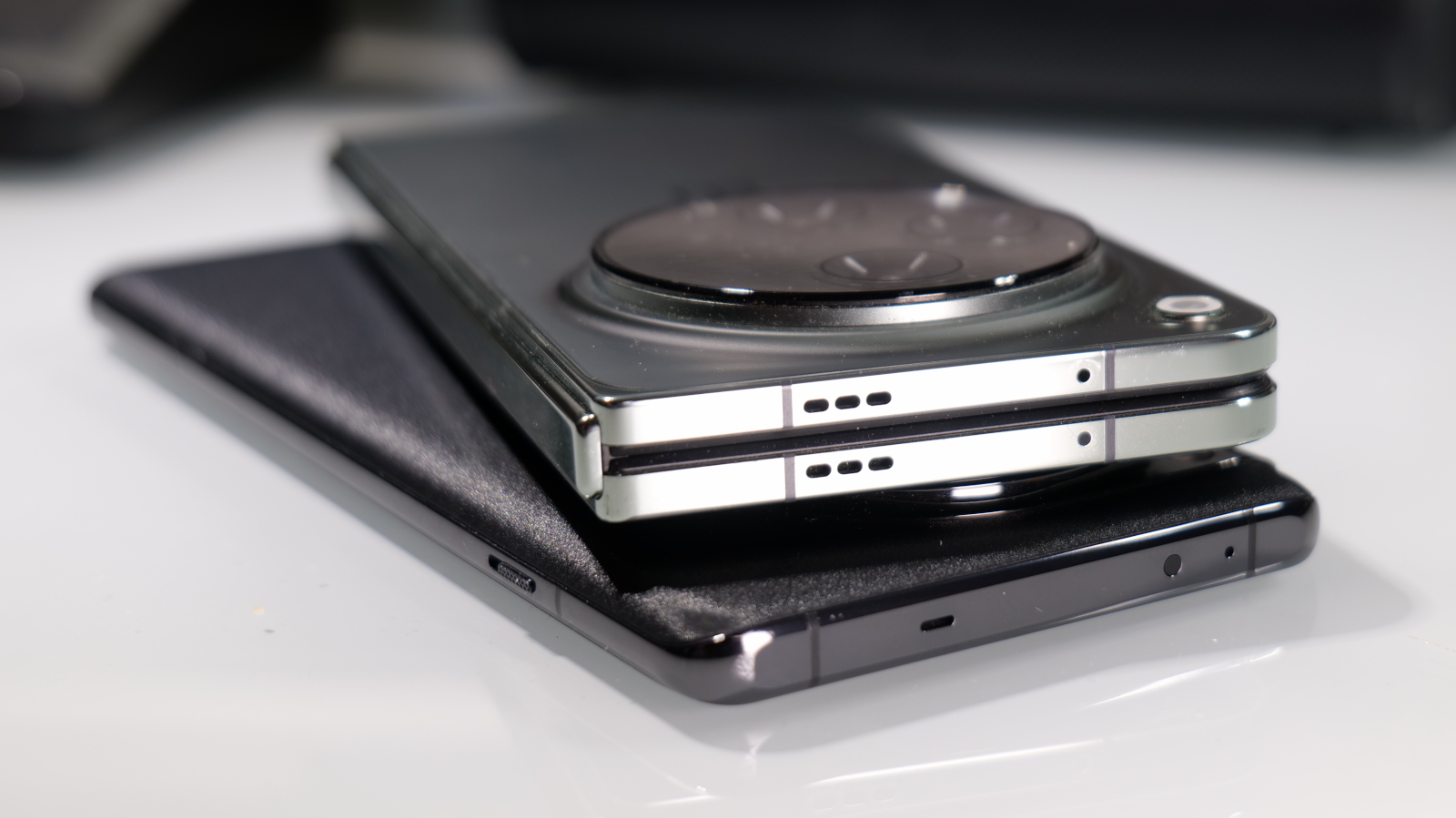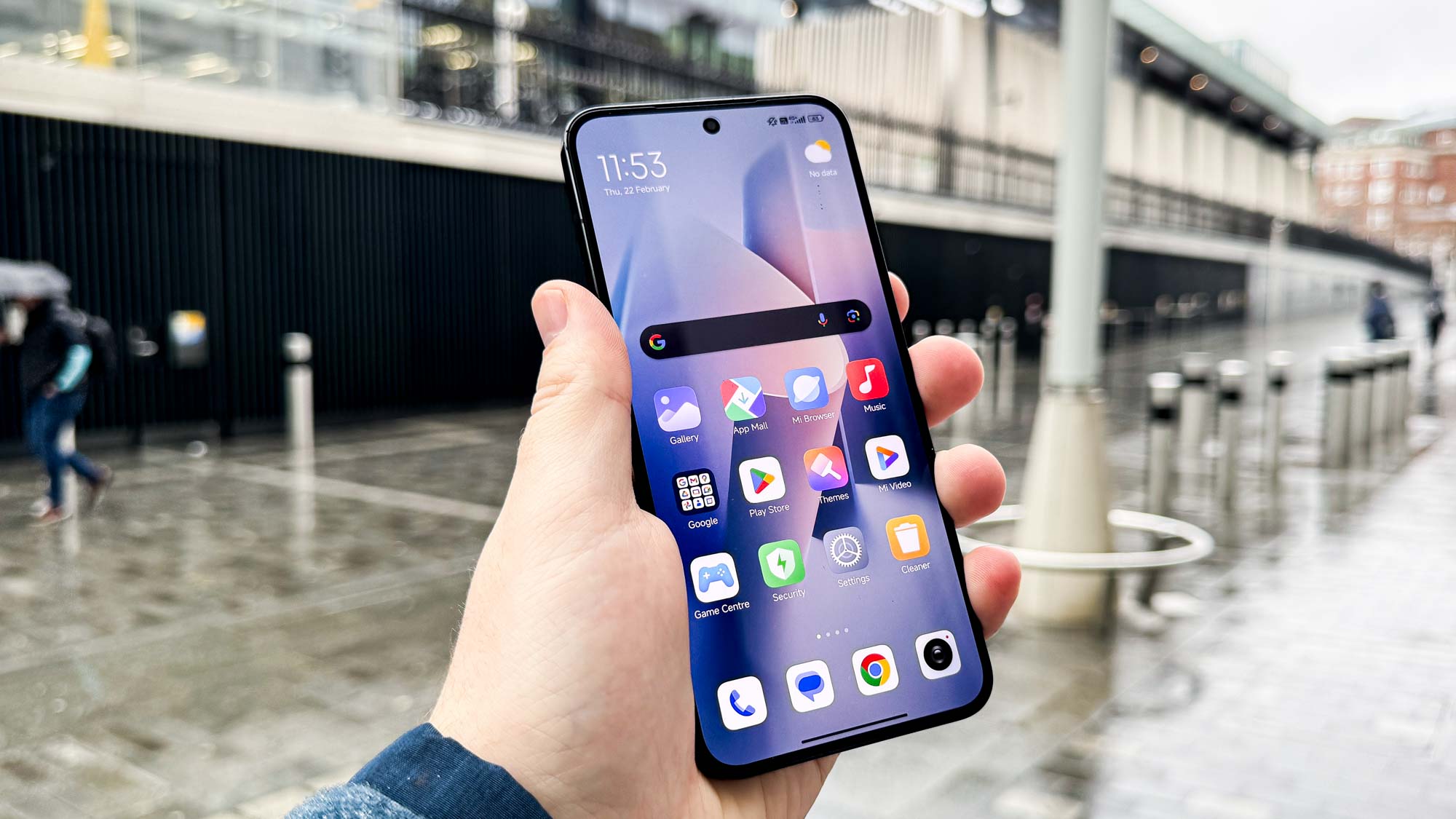Best phones with IR blasters
The best phones with IR blasters let you use your device as a remote control

Remote controls are so old school. So, it's perhaps no surprise that people are looking for the best phones with IR blasters. These small components mimic infrared-remote controls and effectively turn your smartphone into a universal remote.
Unfortunately, while IR blasters were once a common feature for some phone makers, they've fallen by the wayside in recent years. Samsung stopped embedding them in its flagships for a long time now. That said, some Chinese manufacturers, like OnePlus, TCL, Huawei and Xiaomi, still see value in IR blasters and continue to incorporate them to this day.
All of this to say, if you're desperate for a smartphone that can replace your living-room remote, there aren't many easy choices. Many of the best TVs can be controlled through their respective apps. Nevertheless, these are the ones that rise to the top.
What are the best phones with IR blasters?
Why you can trust Tom's Guide
What was once a popular feature is now an uncommon, niche one. Once upon a time, a vast majority of the best Android phones also had IR blasters embedded within them. Combine that with a proper remote control app — either one that came pre-installed onto the phone or third-party software you could download off the Google Play Store — and you had the holy grail of all universal remotes at your disposal.
Times have changed. Today, few flagship phones on sale in North America come with an IR blaster. The majority of them come from OnePlus, which not only sells its phones directly through its site, but they can be picked up at other retailers and carrier stores as well. Samsung and LG ditched them long ago, and Apple never believed in them to begin with.
The best phones with IR blasters you can buy today

Specifications
The OnePlus 13 is your go-to phone if an IR blaster is high on your list. Its companion app lets you easily search through thousands of gadgets to control with its infrared blaster, which is made better by the fact that it's a flagship phone we're dealing with here.
Even better, OnePlus delivers one of its best flagship models in recent memory because it just about improves in nearly every category. First of all, it embraces AI with great results proven by how its new image processing algorithms and AI-assisted enhancements boost its telephoto camera performance in our 200 photos with the OnePlus 13 vs. Galaxy S24 Ultra shoot out. Its Snapdragon 8 Elite also proves it's a processing powerhouse a swell, which also makes it power efficient.
Speaking of battery, it pulls in one of the fastest times in our battery benchmark test with a time of 19 hours and 45 minutes. That beats out just about every other device in our best phone battery life list, with the exception of the Asus Rog Phone 9 Pro.
If those reasons aren't enough to convince you about the OnePlus 12, you should know that it offers the best flagship value in any phone — mainly because it's cheaper than other flagships. Add in its sharp 3x optical zoom camera, we think it has a solid package worthy of your consideration.
Read our full OnePlus 13 review

Specifications
The Xiaomi 14 is as cutting edge a phone as you can expect to find with an IR blaster onboard. Powered by Qualcomm's latest processor — the Snapdragon 8 Gen 3— and a generous 12GB of RAM, the Xiaomi 14's 6.3-inch OLED screen also benefits from an adaptive 120Hz refresh rate for increased responsiveness.
Other features of the Xiaomi 14 include a triple-lens rear camera which packs the a primary 50MP camera, 50MP ultrawide, and 50MP telephoto with 3.2x optical zoom. There's also superfast charging, whether you opt for 90-watt wired or 50-watt wireless. And, of course, this is a 5G phone, meaning it can take advantage of faster data speeds.
As with any import phone, however, you'll want to make sure the Xiaomi 14 will work with enough of the bands your carrier relies upon for service, before taking the plunge on this rare IR blaster-equipped flagship.
Read our full Xiaomi 14 review

3. OnePlus Open
Our expert review:
Specifications
It's the only one in its class to feature an IR blaster, but there are many valid reasons why the OnePlus Open is one of the best foldable phones around. Given how it's OnePlus' first time making one, it's astounding how it hits the mark high in nearly every category.
Starting off with its design, the OnePlus Open feels incredible lightweight and premium. Usually foldable phones have this fragility to them, but not this one. Its main 7.82-inch flexible AMOLED display looks lovely, making it perfect for watching movies and running several apps simultaneously.
Speaking of multitasking, no other phone can match its Open Canvas features, which dynamically arranges up to three apps at the same time. You'll have increased productivity thanks to this feature. If that's not enough to convince you, it undercuts its rivals on price — while also reaching new levels for a foldable phone with its extra long battery life.
You'll also find an IR blaster with its recent variant, the OnePlus Open Apex Edition.
Read our full OnePlus Open review

4. Unihertz Jelly Max
Our expert review:
Specifications
The Unihertz Jelly Max is the perfect example of how phone makers can cram a ton of features into a phone. Dubbed as the world's smallest 5G phone, the Unihertz Jelly Max manages to include an IR blaster that you can program to control all sorts of devices.
Besides that, this ultra compact phone with a 5-inch display makes it super easy to use one-handed. What's even more remarkable for its size is that it features a 100MP main camera, 8MP telephoto with 8x optical zoom, 4,000 mAh battery, 66W wired charging, and finger print sensor. Who knew that you could get all of that in a phone that's a fraction of the size and weight for

Specifications
As you can see, there's really one phone maker that continually offers an IR blaster in its phones. Unlike the other two we've already named, the OnePlus 13R gets you an infrared blaster — but at a much cheaper cost.
It's one of the best cheap phones we've tested, earning high marks in our battery benchmark test and speedy recharge. The cameras could be better at low light, but the tradeoff in having a phone under $500 with an IR blaster can't be overlooked.
Read our full OnePlus 13R review
How we test the best phones with IR blasters
Every smartphone Tom’s Guide reviews is tested for several days in real-world use cases and benchmarked with a gamut of performance-measuring apps. In terms of performance, we used Geekbench 5 to measure overall speed and GFXBench to measure graphics performance.
We also use our own video editing test in the Adobe Premiere Rush app to see how long it takes to transcode a clip, which we run on both Android phones and iPhone to compare performance.
We use a light meter to ascertain display quality data, like brightness and color accuracy, and our proprietary battery test determines longevity on a charge by continuously loading live webpages over a 4G or 5G network. We set each phone to 150 nits of screen brightness and try to use T-Mobile's network each time in order to achieve comparable results across phones.
Lastly, we explore the software, test gaming performance and conduct live camera comparisons with rival handsets — and each of these factors play a part in our comprehensive verdict.
How to choose a phone with an IR blaster
This is one of those cases where you actually don't have a ton of choice. If you're in the market for a relatively-inexpensive phone and the Unihertz Jelly Max fits the bill with its sub-$400 cost. We also recommend the OnePlus 13R as the next alternative because it fetches for $600 and it a more robust phone. And if you absolutely want the best of the best, with pricing not a factor, the OnePlus 13 is our top pick thanks to its flagship caliber performance.
IR blasters generally function the same on all phones, so it's simply a matter of determining which imported handset will best support your carrier's network. Always opt for the international versions of GSM unlocked handsets, as these models can connect to the widest range of bands that carriers employ all over the world, and stand the best chance of working where you live. Do note that only GSM carriers, such as AT&T and T-Mobile, are fully-equipped to take on an internationally-sold, GSM-unlocked phone; Verizon and Sprint are more locked down, and likely won't sync up with an imported device.
If you're interested in snagging an older phone, like the LG G5, just be aware of what you're getting yourself into. Any potential software flaws you run into likely won't have fixes. Battery life on a charge could be lacking too, especially if you purchase a device secondhand, after it's endured some normal wear-and-tear.
Get instant access to breaking news, the hottest reviews, great deals and helpful tips.
Adam Ismail is a staff writer at Jalopnik and previously worked on Tom's Guide covering smartphones, car tech and gaming. His love for all things mobile began with the original Motorola Droid; since then he’s owned a variety of Android and iOS-powered handsets, refusing to stay loyal to one platform. His work has also appeared on Digital Trends and GTPlanet. When he’s not fiddling with the latest devices, he’s at an indie pop show, recording a podcast or playing Sega Dreamcast.
